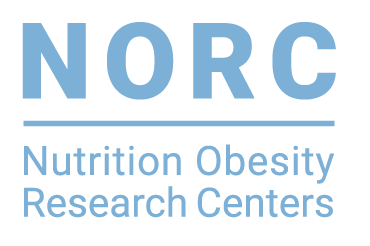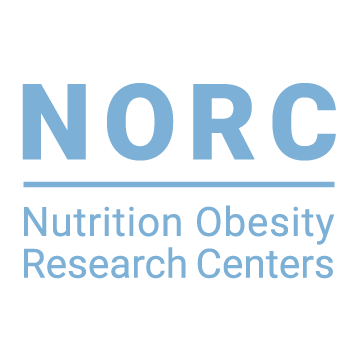University of North Carolina at Chapel Hill

Ximena M. Bustamante-Marin, PhD
Assistant Professor, Department of Nutrition, Nutrition Research Institute
University of North Carolina at Chapel Hill
Dates of Funding: 2023-2024
Contact Information
xmbmarin@med.unc.edu • Phone:(919) 843-4983
Impact of Adipose and Tumor-derived-EVs from Obese and Nonobese Mice on Triple Negative Breast Cancer Cell Metabolism and Metastasis
Obesity increases the risk of triple-negative breast cancer (TNBC) and its progression to metastasis, the major cause of death in women with metastatic TNBC. In obesity, both the tumor and the adipose tissue increase their secretion of extracellular vesicles (EVs), tiny sacs that contain nucleic acids, proteins, lipids, and metabolites that can influence the metabolism and function of the recipient cells. We will isolate EVs from the adipose and tumor tissue of obese and nonobese mice to investigate the impact of EVs on mitochondrial function and the expression of metastatic markers in recipient cancer cell.

Jimikaye Beck Courtney, PhD
Assistant Professor, Department of Exercise and Sport Science
University of North Carolina at Chapel Hill
Dates of Funding: 2023-2024
Contact Information
jimikaye@unc.edu • Phone: (919) 445-1520
Investigating the Combined Associations Between Physical Activity and Alcohol Use Behaviors with Obesity and Inflammation
Over 138 million Americans are currently living with obesity, which costs the United States more $260 billion per year and results in over 324,000 deaths annually due to the negative effects of obesity on inflammation and disease risk. Physical activity decreases obesity, inflammation, and disease risk, whereas alcohol use increases obesity, inflammation, and disease risk; however, it is unknown how these behaviors interact with one another in impacting obesity and inflammation risk. This study will collect 21 days of device-based measures of physical activity and alcohol use to investigate the combined effects of physical activity and alcohol use on obesity and inflammation in adults 21-44 years of age to better inform our understanding of how these behaviors impact disease risk.
 Anna Kahkoska, MD, PhD
Anna Kahkoska, MD, PhD
Assistant Professor, Department of Nutrition
University of North Carolina at Chapel Hill
Dates of Funding: 2023-2024
Contact Information
anna_kahkoska@med.unc.edu • (919) 966-7218
Characterizing Dietary Practices and Beliefs Among Older Adults with Type 1 Diabetes and Opportunities to Provide Nutrition-based Education and Support
Older adults with type 1 diabetes are understudied, and though nutrition is a critical aspect of diabetes management, very little is known eating beliefs and practices in this patient population. We will employ a mixed methods approach including surveys, focus group discussions, and a small dietary assessment study to generate novel data on older adults’ nutrition routines and habits, their beliefs about nutrition and type 1 diabetes management, and their detailed dietary intake. These complementary studies will elucidate opportunities for nutrition-focused education and support in this patient population and inform future interventions targeting the dietary aspects of healthy aging with type 1 diabetes.

Blake R. Rushing, PhD
Assistant Professor, Department of Nutrition, Nutrition Research Institute
University of North Carolina at Chapel Hill
Dates of Funding: 2023-2024
Contact Information
blake_rushing@unc.edu • Phone: (704) 250-5089
Assessing Metabolic Variation of Triple Negative Breast Cancers by Untargeted Metabolomics
Triple negative breast cancer (TNBC) is an aggressive, hard-to-treat subtype of breast cancer which needs improved treatment strategies. Targeting cancer metabolism is an emerging area of cancer therapeutics, however little is known about the metabolic features of TNBC and how they vary from patient-to-patient. We will use untargeted metabolomics to understand the metabolic heterogeneity of TNBCs as well as the genetic/patient/tumor characteristics that drive this heterogeneity, identifying novel personalized therapeutic targets of TNBCs to be further studied in follow-up extramural proposals.

Malia Blue, PhD, CSCS, CISSN
Assistant Professor, Department of Exercise and Sport Science
University of North Carolina at Chapel Hill
Dates of Funding: 2022-2023
Contact Information
mnm3303@email.unc.edu • Phone: (919) 843-4507
The Impact of Race on the Association of Body Composition and Genetic Variants in FTO and LEP
The way fat is stored within the body is influenced by sex, race and ethnicity and genetics. Specific genetic alterations have been shown to influence fat distribution patterns, however, race-specific genetic differences in fat distribution patterns are not well established. Therefore, this study will aim to evaluate how the relationship between fat distribution patterns and genetic variants are impacted by race in non-Hispanic black and Asian females.

Dana Carthron, PhD, RN, AGACNP-BC
Assistant Professor, Department of Nursing
North Carolina Central University
Dates of Funding: 2021-2022
Contact Information
dcarthro@nccu.edu • Phone: (919) 530-7222
Improving the Diabetic Health of Black Men (MANUP-NC): MANUP-NC Feasibility Trial
Many Black Americans continue to be suffer from diabetes, especially Black men. Although previous diabetes efforts have reduced overall disease burden, they have failed to eliminate racial and geographic disparities. The story of John Henry, the “steel-drivin’ man,” represents strength and self-determination among Black Men. But often these traits lead men to “manup” about their health and prevents them from taking care of their diabetes. This study examines how we can assist Black men in improving their diabetes. Based on the traits of John Henry, we will conduct a culturally-tailored study to determine 1) if our education program, including coping strategies and motivation text messages, lowers A1c and 2) how program operates in a rural setting while learning how we can best improve it for a larger study. We hope to have the information to conduct a larger study with Black men in rural areas to improve their diabetes outcomes.

Stephanie L. Martin, PhD, MEd
Assistant Professor, Department of Nutrition
University of North Carolina at Chapel Hill
Dates of Funding: 2021-2022
Contact Information
slmartin@live.unc.edu • Phone: (919) 843-2719
Community-Engaged Formative Research to Design a School-Based Obesity Prevention Intervention for Adolescent Girls in Kenya
Rates of overweight and obesity among adolescent girls are increasing rapidly around the world, including in Africa. There is an urgent need for effective obesity prevention interventions for this population. In Kenya, rates of overweight and obesity are highest among women in urban areas. Adolescence is a critical period for obesity prevention interventions, which can instill lifelong habits that promote healthy diets and prevent disease. This project will use a community-engaged process to design an adolescent obesity prevention intervention to improve healthy eating among adolescent girls in an urban informal settlement (or slum area) in Nairobi, Kenya. We will conduct focus group discussions with adolescent girls, their parents, teachers, school administrators, and health professionals to understand factors that contribute to their obesity risk. Then we will engage adolescent girls and influential adults in a participatory process to develop a school-based obesity prevention intervention based on the research findings.

Johanna Smeekens, PhD
Research Assistant Professor, Department of Pediatrics, Division of Allergy and Immunology
University of North Carolina at Chapel Hill
Dates of Funding: 2021-2022
Contact Information
Smeeken3@email.unc.edu • Phone: (919) 537-3335
Prebiotics as a Nutritional Approach to Prevent Peanut Allergy in Mice
Peanut allergy is a potentially life-threatening disease affecting 2% of the US population. Despite the rise in prevalence over the past two decades, the current standard of care is avoidance with ready access to epinephrine in case of accidental exposure. There is an urgent need for therapeutic and preventative interventions for peanut allergy. In this proposal we aim to prevent the development of peanut allergy in mice by administering a dietary prebiotic, galacto-oligosaccharides (GOS), which will alter the gut bacteria and metabolite composition. Mice will be fed GOS or control diet before and during peanut sensitization; we hypothesize that GOS feeding will modulate the gut bacteria and their metabolites to protect against peanut allergy, demonstrated by lower peanut-specific IgE compared to control diet mice, and no reactions during peanut challenge. The identification of protective microbiome and metabolome profiles will lead to targeted prevention and therapeutic approaches for food allergy.

Xue Bai, PhD
Assistant Professor of Pathology and Laboratory Medicine
University of North Carolina at Chapel Hill
Dates of Funding: 2020-2021
Contact Information
Xue_Bai@med.unc.edu • Phone: (919) 843-5512
GRAF1 Regulates Brown and Beige Fat Formation and Function
Obesity is a world-wide epidemic that is associated with excessive white adipose accumulation and compromised brown adipose tissue (BAT) function. After the discovery of metabolically active BAT in healthy adult humans and occurrence of beige adipocytes within human subcutaneous white adipose tissues, the field of the brown and beige adipocytes has gained great interest. Because brown and beige adipocytes are mitochondria rich, they can utilize high amount of blood glucose and lipid and result in improved glucose and lipid metabolism. Thus they have become attractive targets for obesity and diabetes therapies. And molecules and signal pathways which can regulate brown fat differentiation and function have become research focuses as a promise to fight against obesity and metabolic diseases. My pilot study found RhoGap protein, GRAF1 is highly expressed in BAT compared to white adipose tissue (WAT) and GRAF1 knock down attenuates brown adipocyte development and ability to burn fuel in pre-clinical mouse models. The overall goal of my proposal is to utilize novel BAT specific GRAF1 gain- and loss-of-function mice to explore GRAF1 specificity in adipose function and to test the possibility that GRAF1 gain-of-function mice will be protected from diet-induced obesity. I also strive to determine the mechanistic underpinnings of this response. I hypothesize that GRAF1 is necessary and sufficient to promote brown fat formation and that enforced expression of GRAF1 in adipocytes will limit excess visceral fat formation and insulin resistance induced by overeating.

Flavio Frohlich, PhD
Associate Professor of Psychiatry, Cell Biology and Physiology, Biomedical Engineering, and Neurology
University of North Carolina at Chapel Hill
Dates of Funding: 2019-2020
Contact Information
flavio_frohlich@med.unc.edu • Phone: (919) 966-2682
Target Engagement of Brain Circuits with Non-Invasive Brain Stimulation as a Function of Blood Glucose Dynamics
Obesity begins in the brain. The signals that make us hungry and eat more than we should are the same signals the body uses to regulate blood sugar. We are excited to work towards the development of novel interventions for obesity based on neuroscience. To do so, we need to understand how increased blood sugar (as for example seen in patients at risk for type 2 diabetes) affects brain function. We do know that with elevated blood sugar people perform worse on cognitive tasks. What we do not know is what the corresponding changes in brain activity and brain waves are. Given that obesity and depression often occurs together, we predict that a brain on too much sugar resembles a “depressed brain”. To experimentally test this prediction, we propose to measure and probe electric brain activity after consumption of a sugary drink that elevates blood sugar. We will compare these data to the same measurements collected after the participants consumed an equally sweet but sugarfree drink. Comparing the brain activity patterns between these two conditions will directly tell us how elevated blood sugar alters brain function. Such understanding of how elevated blood sugar modulates brain function represents the first step towards the development of new treatments that aim to restore the changes in the brain introduced by elevated blood sugar to treat, and hopefully one day prevent, the development of obesity and type 2 diabetes.

Zoé A. McElligott, PhD
Assistant Professor of Psychiatry
Dates of Funding: 2019-2020
Contact Information
zoemce@email.unc.edu • Phone: (919) 996-8637
Investigating Adaptation in a Sweet Promoting Neural Pathway
Studies classify over 60% of people in the United States as overweight or obese. High consumption of sweetened beverages, like soft drinks, are associated with obesity, and the risk for becoming obese. This proposal aims to investigate how specific brain circuitry is engaged by, and adapts to, the consumption of sweetened beverages using modern techniques in mice. The goal of these studies is to better understand these adaptations in this novel circuitry, so that researchers can design treatment strategies to alter consummatory behavior in humans.

Folami Y. Ideraabdullah, PhD
Assistant Professor of Genetics and Nutrition
Dates of Funding: 2018-2019
Contact Information
folami@email.unc.edu • Phone: (919) 445-9047
Establishing the Collaborative Cross mouse reference population as a model for studying genetic determination of vitamin D status
People with low levels of vitamin D are more likely to have weak bones, contract infection, become obese and develop heart and reproductive diseases. However, likelihood of having low levels of vitamin D and developing vitamin D associated illness differs between individuals and in some cases is specifically linked to differences in ethnicity. These differences are likely due to genetic differences although mechanisms are poorly understood. There is currently little/no distinction in diagnostic or treatment methods that take into account differences in ethnicity in determining vitamin D status and risk assessment for health outcomes. We therefore propose to establish new tools for quantitation of vitamin D status and to use a novel mouse model to study how genetic factors influence vitamin D status and links to disease. The proposal will use Collaborative Cross (CC) mice that (1) are genetically identical within a strain (providing repeatability of experiments) but genetically different between strains (providing comparability to humans); (2) have been successfully used to study complex human diseases such as flu and inflammatory bowel disease, (3) as mice share vitamin D metabolism and function with humans and have a wide number of research tools available to examine them; and (4) like humans, are genetically different and differ in vitamin D levels (as shown in our preliminary observations). A panel of CC strains was selected based on preliminary results to represent strains with low vs. high basal vitamin D and low vs. high levels of responsiveness to dietary depletion. The vitamin D status will be compared between mouse strains and between treatments with either sufficient or inadequate levels of dietary vitamin D. Experiments were designed to (1) efficiently profile multiple vitamin D metabolites necessary for charactering regulating genetic factors; (2) identify specific CC populations that mimic the diverse vitamin D status in human and (3) quantitatively assess vitamin D function by measuring its downstream hormone. We expect the preliminary data generated from this proposed study to establish a mouse reference panel and vitamin D metabolite assay that is optimized for studying how different genetic factors influence vitamin D status and function. We plan to make all data publicly available, which will allow for further basic and translational research geared towards understanding vitamin D status. Ultimately, these findings will further our understanding of factors underlying population or individual-specific vitamin D requirements and play an important role towards precision health for optimal human (and animal) health.

Rachel W. Goode, PhD, MPH, MSW
Assistant Professor, School of Social Work
Dates of Funding: 2018-2019
Contact Information
rwgoode@email.unc.edu • Phone: (919) 962-6429
Reducing Binge Eating to Prevent Weight Gain in Black Women: A Pilot Study
Currently, 55% of Black women are obese. Obesity is a serious health problem with numerous co-morbidities. Recent evidence has encouraged investigators to focus their efforts on weight gain prevention in Black women. Consuming a healthy, energy-balanced diet and engaging in physical activity are important for prevention of weight gain. Black women, however, may be vulnerable to certain eating behaviors that may pose barriers to weight management. One particular barrier is binge eating, which is associated with severe obesity. By reducing binge eating episodes in black women, weight gain may be prevented.
We propose to conduct a study to examine the potential of a 6-month, eating behavior program, Appetite Awareness Training (AAT) to help Black women reduce binge eating and prevent weight gain. To conduct this study, we will randomly assign participants to two groups: intervention or wait-list control (will receive the intervention later). First, in months 1-2, we will give the intervention group an AAT program. Then, in the 3rd month, intervention participants will receive scales for daily weighing, and we will provide weekly feedback on how often they weigh and changes in weight. We will follow-up with participants at 2 and 6 months to evaluate the impact of our study. We believe that participants in the AAT intervention will report fewer binges, and gain less weight than those in the wait-list control group.
This study is innovative because other than our own pilot work, this is the first study to test a promising eating behavior intervention to treat binge eating behaviors in Black women, and to examine the role of daily weighing to reduce binge eating and prevent weight gain. By conducting this study, we can determine if AAT may be a potential treatment to reduce binge eating and prevent weight gain in Black women. Also, we expect the results of this study to provide additional information to further our knowledge on the prevention and treatment of obesity in Black women, and may encourage future research on how untreated eating concerns might serve as barriers to weight management.

Edward Moreira Bahnson, PhD
Assistant Professor of Surgery
Dates of Funding: 2017-2019
Contact Information
edward_bahnson@med.unc.edu • Phone: (919) 843-0842
Development of a New Animal Model of Dyslipidemia, Atherosclerosis, and Diabetes in Obese Rats
Obesity is associated with development of type 2 diabetes. Diabetic patients have a higher risk of arterial disease such as accumulation of fat deposits and development of hardening of the arteries, which leads to obstruction of blood flow. Reduced blood flow causes severe heart, brain, and limb problems that can result in heart attacks, strokes, and leg amputations. For this reason, patients with diabetes require more surgeries to treat obstruction of blood flow. However, the rate of surgical intervention failure is higher in diabetics due to increased scaring and more rapid closing of arteries following surgical intervention. However, the relationship between obesity, diabetes, and arterial disease is not completely understood. A better understanding of this relationship could lead to more effective therapies for diabetic patients. We propose to create a genetically modified rat that will develop both diabetes and fat deposits in the arteries to study the interaction between the two disease states. We hypothesize that using gene editing techniques to alter the lipid metabolism of diabetic rats will generate a first of its kind model that closely resembles clinical findings in diabetic patients with arterial disease. We will fully describe the progression of obesity, diabetes, and arterial disease in these animals to compare it with reported clinical findings in obese diabetic patients. Our results will provide researchers a platform in which to study complications of obesity related diabetes, including arterial disease, and other surgical interventions required in diabetic patients. Importantly, successful completion of this project will provide a model to develop and test therapies to treat arterial disease in obese diabetic patients

Jimena Giudice, PhD
Assistant Professor of Cell Biology and Physiology
Dates of Funding: 2017-2018
Contact Information
jimena_giudice@med.unc.edu • Phone: (919) 962-6260
Alternative Splicing and Nutrient Uptake: Effects on Striated Muscle Homeostasis During Postnatal Development
The DNA genetic material is converted into RNA molecules than then generate the proteins required for life. This process is known as “gene expression programs”. These programs need to be very well coordinated and occur at the appropriate time during fetal and postnatal development of each organ to maintain optimal health. One gene expression regulatory mechanism is known as “alternative splicing”. Alternative splicing allows individual genes to give rise to multiple proteins with potential different functions. In this manner, organisms more developed like humans create an enormous number of proteins from a relatively limited number of genes. Numerous human diseases are caused by mutations that alter splicing regulation and this is strong evidence of its importance in physiology and health. We aim to investigate the how the interplay between nutrition and alternative splicing affects muscle and cardiac physiology. We expect to provide conceptual advances to understand these functions in normal physiology and how their disruption can lead to pathological conditions.

Damaris N. Lorenzo, PhD
Assistant Professor of Cell Biology and Physiology
Dates of Funding: 2017-2019
Contact Information
damaris_lorenzo@med.unc.edu • Phone: (919) 966-6412
Regulation of Adipose Tissue Metabolism by ankyrin-B
Obesity and diabetes have reached alarming proportions worldwide. Despite extensive evidence of the genetic causes of these diseases, pinpointing which of, and how, these genes cause them, and advancing their treatment have been met with little success. We recently discovered that mice in which we introduced two different human mutations in the protein ankyrin-B (AnkB) develop abnormalities in their pancreas, gain weight more easily, and eventually become obese and insulin resistant as they get older, or at a younger age if they eat fatty diets. We became interested in these AnkB mutations because they are found in several patients with diabetes and heart disease. Through additional investigations, we learned that when we eliminate AnkB in fat cells only, mice also get significantly fatter with age or when fed fatty diets, and reach a pre-diabetic state. Based on these findings, we believe that AnkB is essential for the normal development and functioning of fat tissue. Therefore, we would like to understand how this protein does its job in fat cells and how deficiencies in its functions can result in obesity and other associated diseases. We are also intrigued by observations linking AnkB to the levels of the enzymes that metabolize a set of molecules known as branched chain amino acids (BCAA) in fat, and to the concentration of these molecules in the blood. Several studies suggest that high level of BCAA in the blood is associated with obesity and diabetes in humans, but we do not understand why. We suspect that AnkB is involved in regulating BCAA functioning in fat, and that simultaneous increases in BCAA and lipids contribute to the development of insulin resistance in mutant mice. In this study, we will investigate this hypothesis, as well as other potential functions of AnkB in fat tissue. We will also study whether other mutations in AnkB result in defects in fat cell functions. These studies will help us understand how AnkB ensures proper development and functioning of fat tissue, and whether and why, when mutated, it might cause obesity and diabetes in humans. This knowledge, in turn, could ultimately lead to early and personalized intervention for millions of Americans that might be affected by these mutations.

Fernando Pardo-Manuel de Villena, PhD
Professor of Genetics
Dates of Funding: 2016-2017
Contact Information
fernando@med.unc.edu • Phone: (919) 843-5403

Abbie Smith-Ryan, PhD, CSCS, CISSN
Assistant Professor of Exercise and Sports Science
Dates of Funding: 2016-2018
Contact Information
abbsmith@email.unc.edu • Phone: (919) 962-2574
Genetic Determinants on the Physiological Response to Exercise: A Sex Evaluation
This research aims to identify mouse strains with different types of fat response (loss or gain) to exercise. Identification and characterization of model strains are vital for the development of exercise guidelines for humans. This study will examine fat changes to different exercise programs in both sexes and across four mouse strains. The goal is to identify differential fat response to exercise based on sex and exercise programs in model strains. Identification of model CC strains for responders which lose fat and responders which gain fat will be important for future studies to determine the genetic architecture and biological mechanisms underlying the observed phenotypes.

Rosa Tamara Branca, PhD
Assistant Professor of Physics and Astronomy
Dates of Funding: 2015-2017
Contact Information
rtbranca@unc.edu • Phone: (919) 962-2229
Assessment of Beige Fat Thermogenic Activity and its Contribution to Whole Body Metabolism by Hyperpolarized 129Xe Gas MRI and Metabolic Chamber Studies
The aim of this research is to establish, by using a novel technique developed in our lab, whether beige adipocytes are thermogenically competent and to quantify their contribution to NST mediated metabolic rate. Thermogenic activity by beige fat will be assessed by hyperpolarized (HP) 129Xe MR thermometry, a non-invasive technique that can be used to detect the temperature of fat-containing tissues with unprecedented sensitivity and accuracy18.
Related Publications
- Zhang L, Burant A, McCallister A, Zhao V, Koshlap KM, Degan S, Antonacci M, Branca RT. Accurate MR thermometry by hyperpolarized (129) Xe. Magn Reson Med. 2016 Oct 19. PMID: 27759913.
- Burant A, Branca RT. Diffusion-mediated (129)Xe gas depolarization in magnetic field gradients during continuous-flow optical pumping. J Magn Reson. 2016 Oct 26;273:124-129. PMID: 27825066.

Jason Whitmire, PhD
Associate Professor of Genetics, Microbiology and Immunology
Dates of Funding: 2015-2017
Contact Information
jwhitmir@email.unc.edu • Phone: (919) 843-7081
Consequences of Adipose-T cell Interactions on Long-Term Immunity
This research will use a mouse model of virus infection to study how adipose tissue and obesity affect T cell responses to infection. We find many virus-reactive T cells enter and remain in the fat tissue after an acute infection. We have also uncovered evidence that residual viral material is retained in fat tissue for extended times after the infection is resolved. We believe the residual viral antigen lures memory T cells to that location where they become inhibited. The goal of this study is to learn whether the adipose tissue blunts the antiviral functions of those T cells and whether T cells from adipose tissue return to peripheral lymphoid tissues and reduce systemic immunity. Additionally, we wish to learn whether obesity impairs antiviral T cell responses. These efforts will support our long-term goal to better understand how T cell-adipose tissue interactions weaken immunity to infection. The ultimate goal is to translate those findings into therapies for human subjects with weight disorders.
Abstracts
- Ichiro Misumi, Daisuke Yamane, Jason Whitmire; “Systemic viral infection generates adipose tissue resident memory T cells”; Immunology T32 Symposium; Chapel Hill, NC; April, 2015.

Natalia Krupenko, PhD
Assistant Professor of Nutrition
Dates of Funding: 2014-2017
Contact Information
natalia_krupenko@unc.edu • Phone: (704) 250-5054
Liver Metabolism in CerS6 KO Mice
The goal of this research is to demonstrate a functional connection between sphingolipid and folate pathways in a whole animal model. Specifically, it will evaluate the function of an important sphingolipid enzyme, CerS6, as a major determinant connecting dietary folate status with the specific lipid profiles in liver and several other tissues.
Related Publications
- Fekry B, Jeffries KA, Esmaeilniakooshkghazi A, Ogretmen B, Krupenko SA, Krupenko NI. CerS6 Is a Novel Transcriptional Target of p53 Protein Activated by Non-genotoxic Stress. J Biol Chem. 2016 Aug 5;291(32):16586-96. PMID: 27302066; PMCID: PMC4974374.
- Fekry B, Esmaeilniakooshkghazi A, Krupenko SA, Krupenko NI. Ceramide Synthase 6 Is a Novel Target of Methotrexate Mediating Its Antiproliferative Effect in a p53-Dependent Manner. PLoS One. 2016 Jan 19;11(1):e0146618. PMID: 26783755; PMCID: PMC4718595.

